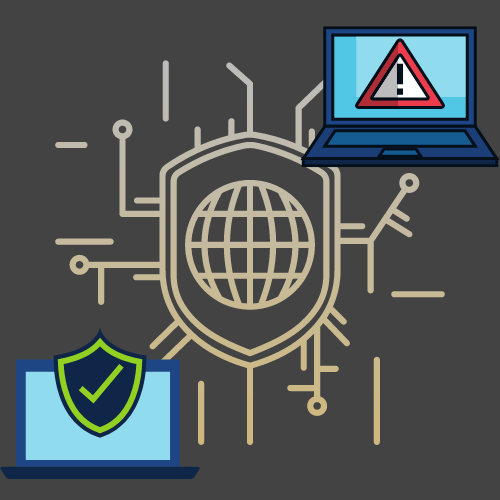Staff Tools and Services
Commonly used OIT tools, services, and resources for staff. To view all services, browse all tools and services.
Receive system status updates directly to your phone or email when you sign up for Statuspage. Customize which alerts and notifications you receive so you only get information pertinent to you.
Review the complete list of system alerts to learn about any planned outages related to OIT.
Get Help
Phone Support
Contact us over the phone for assistance
303-724-4357 (4-HELP from a campus phone)
7:30 a.m. to 6 p.m., Monday - Thursday
7:30 a.m. to 5 p.m., Friday

Chat Support
OIT chat support is currently unavailable. We are working to restore Chat capabilities as quickly as possible.
Please use phone support or one of our self service options for assistance during this time.

Self Service Portal
Enter a ticket for assistance
24/7 access to the Service Center, your ticket will be replied to during normal hours of operation in the order it was received.
University Access Resources
When connecting from off-campus, there are several remote options based on your needs. You will be prompted for multi-factor authentication through Duo during login to the VPN or VMware Omnissa Horizon for remote access.
See full details
Single Sign On (SSO)
Category: OIT - Categories OIT - Type of software Remote Access Audience: Faculty Staff Students Cost: FreeAuthentication services to university units for departmental or campuswide applications that require the authentication of users based on their affiliation with the university.
See full details
Operations Resources
Directory Listing and User Account Update
Category: Email Marketing and Communications OIT - Categories OIT - Type of software Audience: Faculty Researchers Staff Students Cost: FreeThe university campus directory website will be sunsetted on Thursday, April 10, 2025. There are several ways to update your university directory information and user account. Scroll down for details on how to make changes as well as search for university community members using the Microsoft 365 People Search function.
See full details
Network Services
Category: Billing Computer and Device Support OIT - Categories OIT - Type of software Operating Systems Remote Access Remote Access Audience: Faculty Staff Students Cost: See extended details for service ratesThis service request provides wired and wireless computer access to the university's data network. This connectivity allows access to the Internet and to university-managed network-dependent resources (such as servers and applications).
*Need to be on VPN or campus network to access button link
See full details
New Equipment Purchases
Category: Computer and Device Support OIT - Categories Audience: Faculty Staff Students Cost: FreeIf you need assistance in deciding what equipment will be best suited for your needs, our Service Desk team can assist with a consultation and recommendations before you make your purchase. Our OIT Service Desk will help ensure your purchase meets the university's minimum technology requirements.
See full details
Storage, Servers and Backups
Category: Billing OIT - Categories OIT - Type of software Operating Systems Productivity and Business Remote Access Audience: Faculty Researchers Staff Cost: See extended details for service ratesServer hosting, backup and storage services include a variety of file and data backup solutions available to university faculty, staff and students. Other services include setup and centralized hosting of both physical and virtual servers. Fees may apply for some services.
See full details
Telephone Setup and Support
Category: Billing OIT - Categories OIT - Type of software Phones Productivity and Business Audience: Faculty Staff Cost: See extended details for ratesThis service request is to install/activate, make changes, or deactivate an office/desktop telephone connection at a designated location. Typical use of this service is to support an office phone, or multiple office phones, connection.
See full details
University Systems Account Access
Category: OIT - Categories OIT - Type of software Operating Systems Remote Access Remote Access Audience: Faculty Staff Cost: FreeOIT manages access to email, Active Directory, VPN and certain library entitlements as well as the information that is sent to badging and parking. Access to HCM, Finance, PeopleSoft and CU-SIS is managed by University Information Systems at the CU System Office. Submit a ticket for help accessing these university systems.
Academic Tools and Resources
Phishing Emails
Category: Email IT Security IT Security OIT - Categories OIT - Type of software Audience: Faculty Staff Students
Phishing is a psychological attack used by cyber criminals to trick you into giving up information or taking an action. Learn more about recognizing phishing attempts.
Phishing Attacks
Phishing is a psychological attack used by cyber criminals to trick you into giving up information or taking an action. Phishing originally described email attacks that would steal your online username and password. However, the term has evolved and now refers to almost any message-based attack. These attacks begin with a cyber criminal sending a message pretending to be from someone of something you know, such as a friend, your bank, your company or a well-known store.How to Recognize a Phishing Attack
- A URL inconsistent with the message (for example, a message that claims it is from the service desk but does not include ucdenver.edu or cuanschutz.edu in the URL)
- Spelling errors, poor grammar and odd formatting
- A reply-to email address that is not from "ucdenver.edu" or "cuanschutz.edu"
- A request for a password or other sensitive data
- Generic greetings, like "Dear customer"
- Threat to delete account if no action is taken
Remember that legitimate companies and organizations will never ask for passwords, social security numbers, and other sensitive data via email.
How to Know if Your Account is Compromised
- You are unable to login to your account because hacker changed the password or it’s clearly disabled or locked
- You are unable to send email to external addresses because Microsoft blocked it
- You notice missing emails or returned undelivered emails
- You find an unknown forwarding email or deleting email rule in place
- You see multiple unknown sent items appear in the “Sent Items” folder
Additional Tools and Resources
Phishing Emails
Category: Email IT Security IT Security OIT - Categories OIT - Type of software Audience: Faculty Staff Students
Phishing is a psychological attack used by cyber criminals to trick you into giving up information or taking an action. Learn more about recognizing phishing attempts.
Phishing Attacks
Phishing is a psychological attack used by cyber criminals to trick you into giving up information or taking an action. Phishing originally described email attacks that would steal your online username and password. However, the term has evolved and now refers to almost any message-based attack. These attacks begin with a cyber criminal sending a message pretending to be from someone of something you know, such as a friend, your bank, your company or a well-known store.How to Recognize a Phishing Attack
- A URL inconsistent with the message (for example, a message that claims it is from the service desk but does not include ucdenver.edu or cuanschutz.edu in the URL)
- Spelling errors, poor grammar and odd formatting
- A reply-to email address that is not from "ucdenver.edu" or "cuanschutz.edu"
- A request for a password or other sensitive data
- Generic greetings, like "Dear customer"
- Threat to delete account if no action is taken
Remember that legitimate companies and organizations will never ask for passwords, social security numbers, and other sensitive data via email.
How to Know if Your Account is Compromised
- You are unable to login to your account because hacker changed the password or it’s clearly disabled or locked
- You are unable to send email to external addresses because Microsoft blocked it
- You notice missing emails or returned undelivered emails
- You find an unknown forwarding email or deleting email rule in place
- You see multiple unknown sent items appear in the “Sent Items” folder
